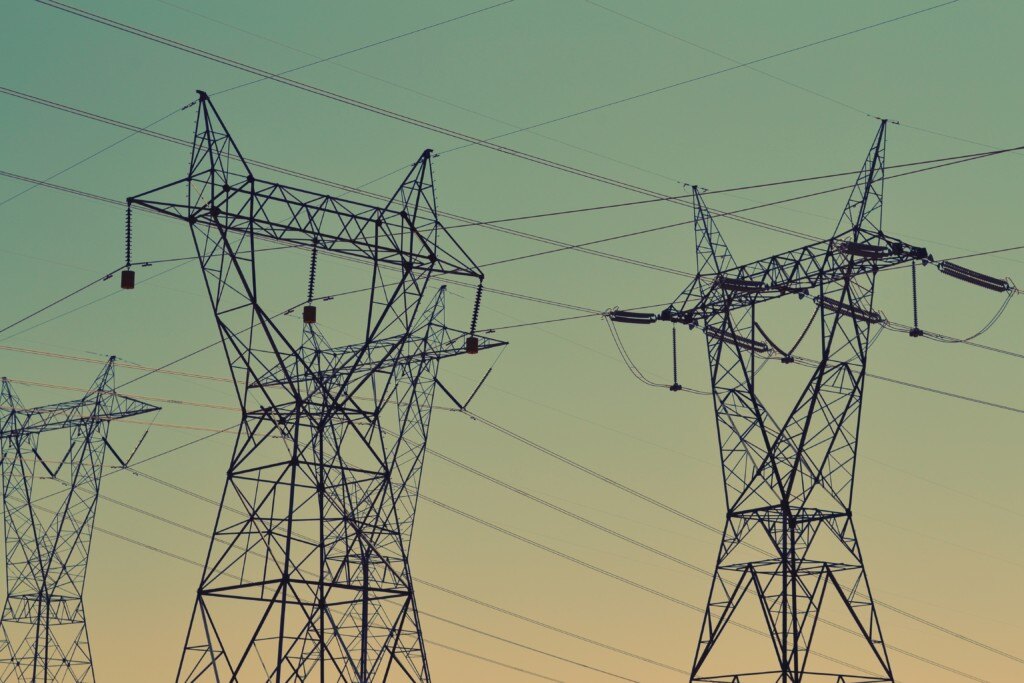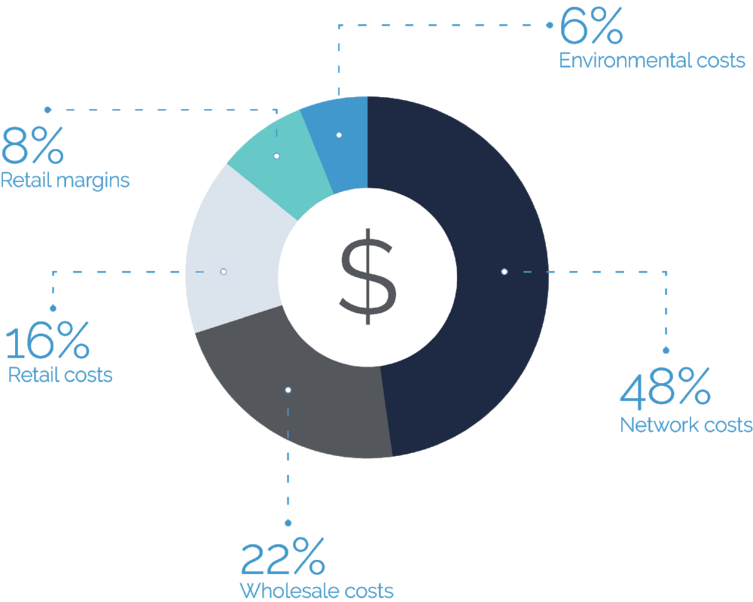Electricity plans - where does your money go?

Electricity plans...where does your money go?
Just where does the money from your electricity bill go? We’ve all noticed a price hike in our bills in recent years. But why and where is your money going? We've made it easier for you to know your power bill.
We slice and dice your electricity bill into parts to find how much you actually pay for included services.
How does your power get to you?
But before we operate on your bill, it’s important to know where your electricity comes from.
Your power is delivered to you through a three point system:
1. Generator
Generators produce electricity. In Australia, most of our generators are coal or gas, but in recent years renewable energy generators such as solar and wind farms have been added to Australia’s energy mix.
Despite this, every time you boil the kettle to make a cup of tea, approximately 90 per cent of the electricity you use was generated at a power station by burning coal or gas.
2. Networks
Networks are responsible for delivering electricity to your house. They are in charge of Australia’s electricity grid infrastructure - all the poles and wires.
Networks maintain and build infrastructure and make sure we get electricity when we need it.
They're responsible for external repairs such as damaged electricity poles or lines and blackouts, they also install smart meters.
When you turn on the kettle’s switch, electricity travels straight to your appliance close to the speed of light. Although this occurs instantaneously, it's the networks who make sure we get electricity when we need it.
3. Retailer/Electricity company
This is the 'middleman' who buys wholesale electricity from generators and then sells it to you, sending you a bill every quarter.
Your retailer may offer different plans but changing retailer won’t affect the reliability or quality of your electricity.
They must comply with Government legislation and have minimum service provisions.
Who pays for the cost of poles, wires and the generators?
The money you pay for your electricity through your retailer goes towards:
- building and maintaining generators
- building and maintaining network infrastructure
- administration costs including reading your meter, and your retailer’s billing and marketing
But what's the breakdown?
In 2015/16 the average Australian electricity bill was $1,524, breaking this down via the costs:

Who sets the price for your electricity?
The price you're paying for your electricity includes the tariff and fees and other charges that may apply under your current plan and contract.
Tariffs don’t include GST this is usually added to the total of your bill at the end. For more information about your electricity bill read our guide to understanding your bill.
In some states the price is set by the Government, some retailers may have regulated tariffs or plans. In the ACT, Tasmania and Queensland you can ask for a plan or contract with a regulated price for your electricity. However, in Victoria, South Australia and New South Wales the electricity retailers set their own, they don’t have regulated prices.
How is your electricity measured?
Your electricity is measured by the amount of power used over an hour: the watt hour (Wh). A thousand watt hours is one kilowatt hour (kWh). If you have a smart meter it will measure your consumption every 30 minutes.
Your electricity bill will have the total number of kilowatt hours used over a period of time, in most cases this is usually three months.
How can you control how much you pay?
As you can see from the breakdown, you're limited when you try to reduce your electricity bill. You can’t avoid paying the network maintenance infrastructure costs but you can reduce the amount you pay to retailers and generators for your energy by investing in solar.
Coupled with Reposit First smart home energy monitoring software, you can monitor how much your household uses energy and make smart choices.
Monitoring energy consumption
Knowing how much energy your household consumes and when, can result in some serious savings on your electricity bill.
If you're one of the more than 1.89 million Australian households with solar panels on your roof, you can reduce your energy consumption by using your most energy hungry appliances such as the dishwasher or washing machine when your panels are producing more energy than your household is consuming.
If you don’t have panels, you can monitor your electricity consumption and reduce your electricity bill by using your energy hungry appliances at times when electricity prices are lowest.
Some electricity plans charge different prices at different times throughout the day for using energy. By timing your appliances to come on when energy is cheapest you can save big on your electricity bill.
Doing all the calculations and sums to work out your household’s energy consumption and costs is complicated and time consuming. Reposit does it all for you. You can monitor in real-time to get instant updates of accurate information at your fingertips. This means you have complete control of your household’s energy consumption and costs.
Learn more about how Reposit can help you, or request a quote today.

